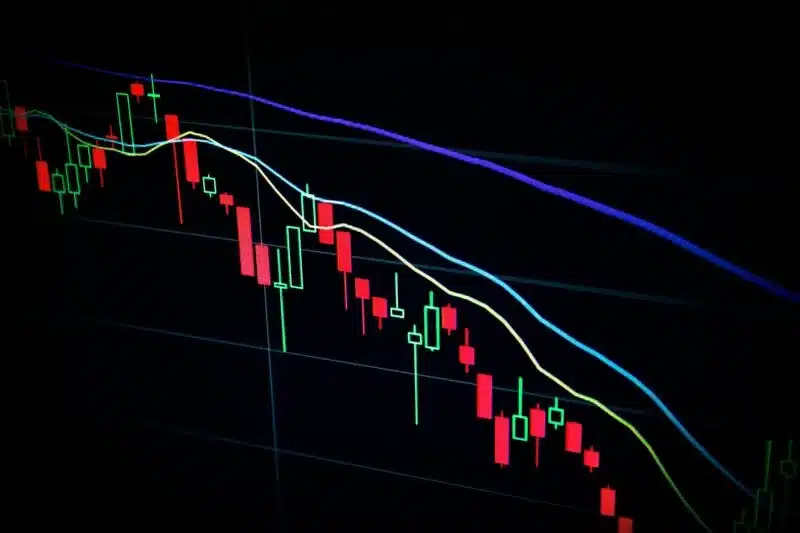For the zloty – as with other regional currencies – it was a weak week. Rising tensions in the Middle East have led investors towards the American dollar. Concurrently, a reduction in fears about an economic slowdown in the U.S. has allowed for a considerable strengthening of the American currency.
Key points:
➢ Rising geopolitical concerns have led investors to flee from risk.
➢ The American NFP report significantly exceeded expectations.
➢ The combination of the aforementioned factors contributed to the weakening of the zloty.
➢ The USD has strengthened against the other G10 currencies.
➢ The GBP has lost value following dovish comments from Bailey.
A very strong September NFP (non-farm payrolls) report from the U.S. allowed the American currency to reach the top of the charts last week. Markets currently almost entirely exclude a consecutive 50 b.p. cut at the Fed’s November meeting, especially following hawkish comments made by Chairman Jerome Powell. Only a few Latin American currencies have strengthened against the dollar, these being significant oil exporters. The largest beneficiary of recent events was the Mexican peso, which has benefited from a sharp rise in commodity prices and its significant distance from the Middle East.
Inflation will again be the focus this week – on Thursday (10.10) the U.S. September CPI report will be published. It would need to surprise significantly on the upside to dispel the chance of a 25 b.p. cut at the Federal Reserve’s November meeting, which markets are currently fully pricing in. We will also find out the August figures for the Eurozone (retail sales on Monday 07.10) and the UK (GDP and industrial production on Friday 11.10) which should not significantly impact the market. Furthermore, investors will be closely monitoring developments in the Middle East.
PLN
Last week was tough for most emerging market currencies, including the zloty. The Polish currency, with its high beta, fared worse than most EM currencies – the only exceptions being the Hungarian forint and the South Korean won. Mostly to blame are external factors, especially the risk-off mode caused by concerns about the situation in the Middle East and significant changes in interest rate pricing in the U.S. Additionally, fears about the state of the Eurozone economy persist, casting a shadow over the region. Depreciation against the common currency of almost 1% in just a week is undoubtedly significant, however, the perspective is important – the EUR/PLN rate is now only slightly above 4.30.
Domestically, attention focused on the NBP’s meeting. Rates remained unchanged, and the press conference held by President Adam Glapiński was the most significant. Despite inflation rising to 4.9% in September, his tone became even more dovish – both his comments and recent reshuffling in terms of risks suggest that the scales may be tipping towards a cut in March. However, there is still some time before cuts become a realistic possibility, and we are currently in an exceptionally uncertain period.
EUR
Last week we saw yet another low inflation reading in the Eurozone, which means that the European Central Bank is on the right track to lower interest rates during their next meeting (17.10). Markets are currently pricing in cuts at each of the subsequent four meetings until Q2 2025. While we find this slightly aggressive, further deterioration in economic activity data could indeed trigger a quicker pace of cuts. The upside revision of PMI indicators last week is positive in this context, although they still point to stagnation in the bloc.
A sizable difference between the performances of the Eurozone and U.S. economies caused market interest rates to diverge at their fastest pace since the onset of the pandemic, resulting in the common currency suffering. This week numerous economic data for August, speeches from ECB officials, and the minutes from the bank’s last meeting will draw attention.
USD
The September NFP report proved significantly stronger than expected – this applies to unemployment, job growth, and wage growth. It appears that the Federal Reserve has managed to orchestrate a soft landing, i.e., a situation where inflation is brought back to target while avoiding a recession. This should increase the likelihood of a more gradual loosening of the FOMC’s monetary policy, which Chairman Jerome Powell fundamentally agreed with last week. Markets currently do not see significant chances for a 50 b.p. cut, and their base scenario is a standard 25 b.p. cut.
Lower interest rates in the U.S. is a positive outlook for risky assets. However, the U.S. economy remains strong, the Fed is more hawkish than expected, and the dollar has also benefitted from geopolitical concerns related to escalation in the Middle East. The November presidential elections are currently the most significant source of uncertainty, and their outcome remains difficult to predict. After last week’s vice-presidential debate, betting odds indicated a tie.
GBP
The appreciation of the pound, which has been ongoing in trade-weighted terms for over two years, slowed somewhat last week. Investors used the dovish comments of the Bank of England (BoE) Governor Andrew Bailey as an excuse for partial profit-taking. He warned that the committee may lower interest rates at a more aggressive rate if inflation in the UK continues to fall. The next day, however, this statement was softened by the BoE’s chief economist Huw Pill. Markets reacted by pricing in a more aggressive cycle of monetary policy easing in the UK overall. We believe however, that Bailey’s comments were taken too literally and were meant simply as a warning rather than an announcement of a faster pace of cuts.
Despite last week’s drop, the pound remains the best-performing G10 currency so far this year. The reading of August’s GDP on Friday (11.10) should confirm that demand in the UK remains relatively resilient, at least compared to the situation in the Eurozone. We, therefore, expect – if dramatic events in the Middle East do not occur – the pound to gain again.
Authors: Enrique Díaz-Alvarez, Matthew Ryan, Roman Ziruk, Michał Jóźwiak – Ebury analysts.
Source: https://ceo.com.pl/zloty-traci-przez-wzrost-napiecia-na-bliskim-wschodzie-i-swietne-dane-z-rynku-pracy-usa-63979
